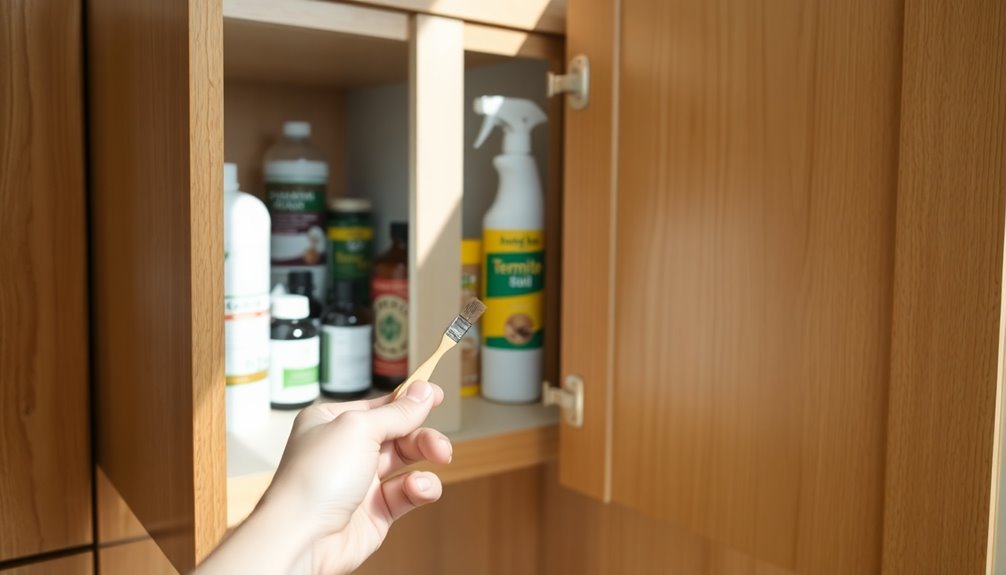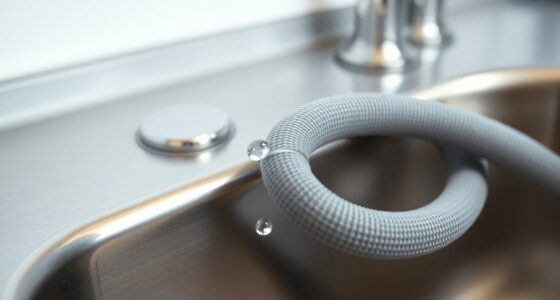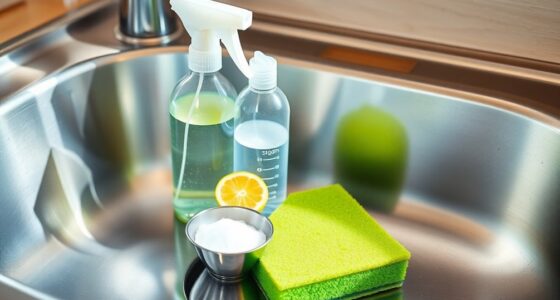If you suspect termites in your kitchen cabinets, start by checking for signs like blisters, hollow sounds, or small pellets. For immediate control, spray a mix of vinegar and lemon juice or apply orange oil directly to affected areas. Consider setting moistened cardboard traps or sprinkling boric acid around infested spots. If the problem's severe, professional pest control services might be needed. Keep your kitchen dry and well-sealed to prevent future infestations. Discover more effective strategies ahead!
Key Takeaways
- Inspect kitchen cabinets for signs of termite damage, such as blisters, hollow sounds, and frass.
- Apply a vinegar and lemon juice spray directly on termites for immediate contact elimination.
- Use orange oil on affected areas to effectively kill termites.
- Set up moistened cardboard traps to attract and dispose of termites.
- Consider professional pest control services for severe infestations to ensure thorough treatment and prevention.
Signs of Termite Infestation in Kitchen Cabinets
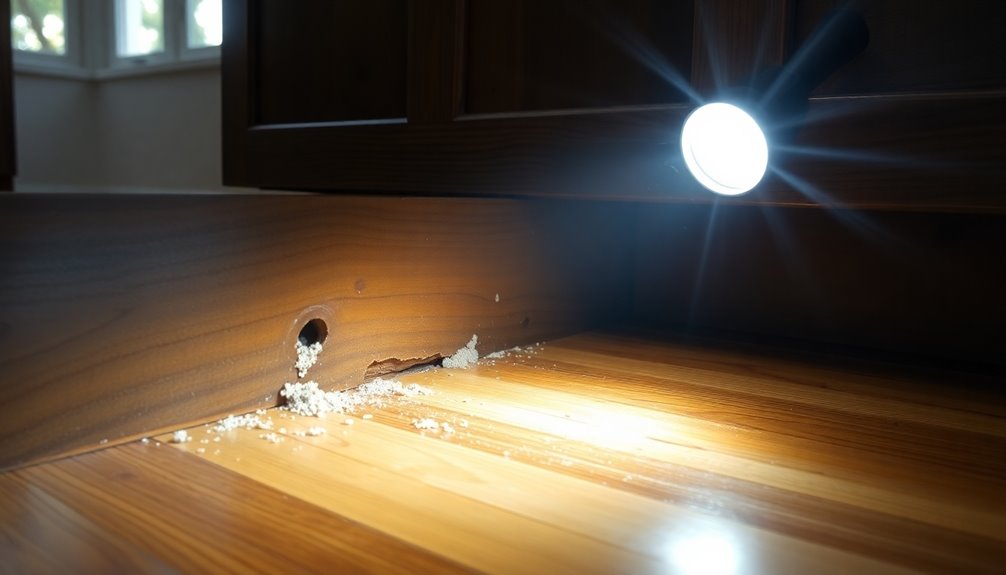
When you suspect termites might be lurking in your kitchen cabinets, there are several signs to watch for.
Look for blisters or buckling in the wood surface, which can indicate damage beneath. When you tap the wood, listen for a hollow sound; this suggests termites have compromised its integrity.
If you find small pellets resembling droppings, known as frass, near the cabinets, it's a clear sign of active feeding. Additionally, keep an eye out for discarded wings near windows or doors, as this indicates swarming termites nearby.
Swollen cabinet doors may also signal termite activity, making them difficult to open or close.
Recognizing these signs of termite infestation is essential for effective termite control and protecting your kitchen cabinets.
Effective Home Remedies for Termite Control
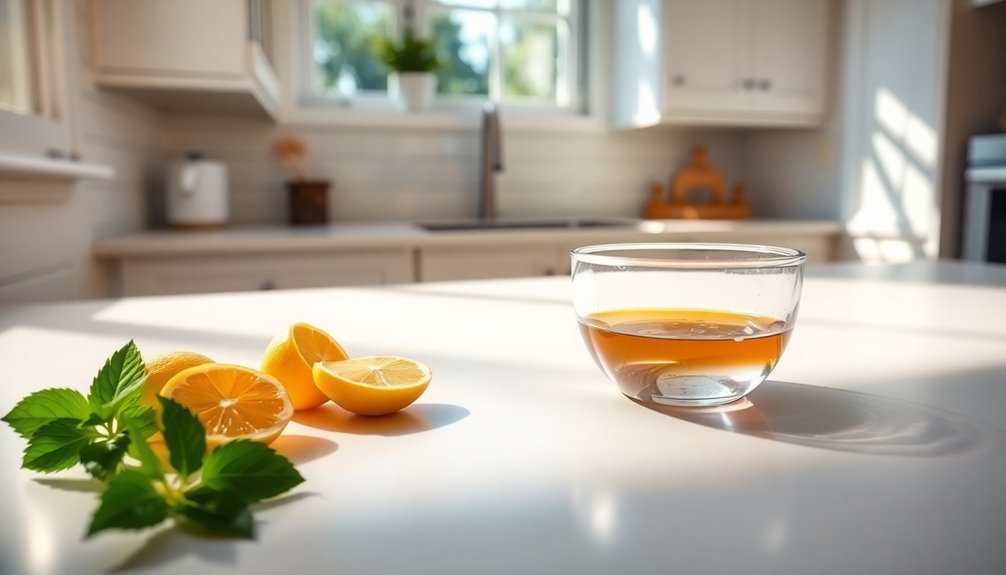
If you're dealing with a termite problem in your kitchen cabinets, several effective home remedies can help you take control of the situation. Here are some options:
| Home Remedy | Description |
|---|---|
| Vinegar and Lemon Juice | Spray a mix of vinegar and lemon juice to kill termites. |
| Orange Oil | Apply orange oil directly to affected areas to kill the termites. |
| Wet Cardboard Traps | Use moistened cardboard to attract and dispose of termites. |
| Boric Acid | Sprinkle in affected areas to damage termites' nervous system. |
| Diatomaceous Earth | Apply this powder around infested areas to dehydrate termites. |
These home remedies can help you effectively control termites and protect your kitchen cabinets from further damage.
Professional Treatment Options for Severe Infestations
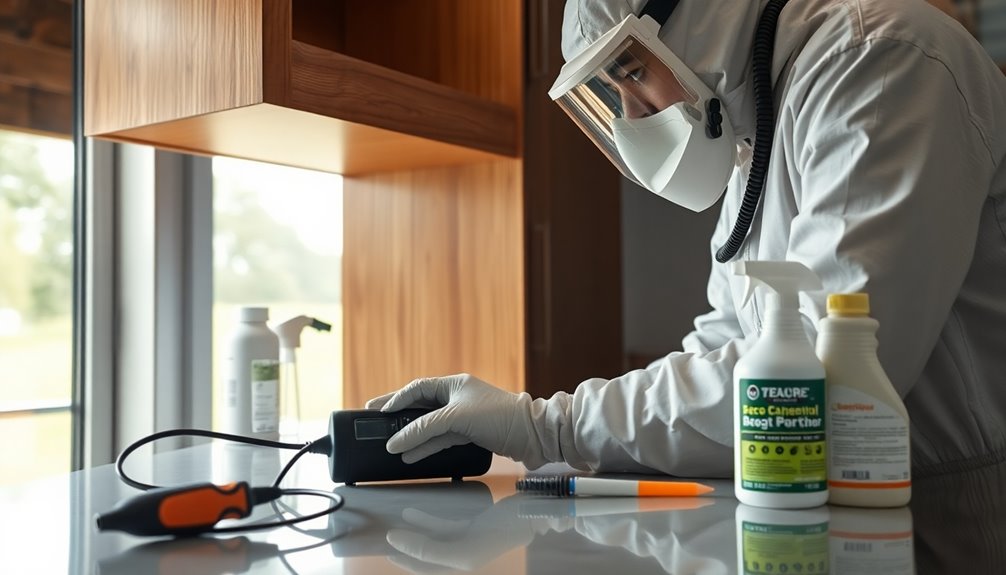
Dealing with a severe termite infestation in your kitchen cabinets can be overwhelming, but professional treatment options are available to effectively tackle the problem.
Professional pest control services provide thorough inspections to identify the type of termite and assess the damage. Based on their findings, they might recommend termite treatment options like tent fumigation, which seals off your kitchen and uses gaseous pesticides to eliminate pests.
Additionally, bait stations can be strategically placed around the kitchen to attract and kill termites, offering a long-term solution. Soil treatments using termiticides create protective barriers against subterranean termites.
Regular follow-up inspections by pest control experts guarantee ongoing protection of your kitchen cabinets and help detect any new infestations early.
Preventing Future Termite Infestations
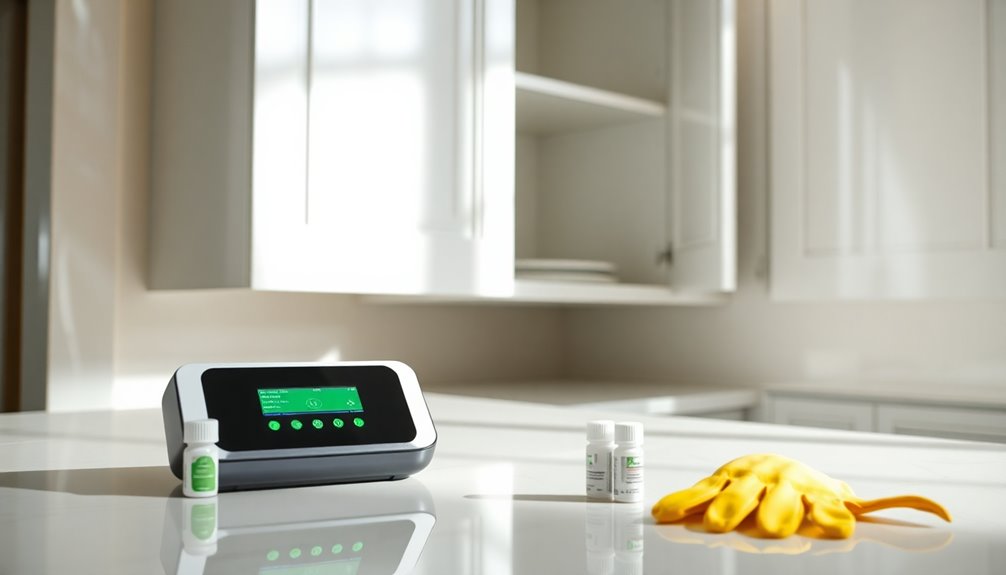
To prevent future termite infestations in your kitchen cabinets, it is crucial to stay proactive about maintenance and monitoring. Start by maintaining low humidity levels and ensuring good ventilation, as termites thrive in moist environments.
| Strategy | Description |
|---|---|
| Sealing Cracks | Close gaps in cabinetry and around fixtures. |
| Wood Materials | Use pre-treated wood for pest resistance. |
| Moisture Accumulation | Implement proper drainage and landscaping. |
| Regular Inspections | Check for signs of termite activity frequently. |
Importance of Regular Inspections and Maintenance
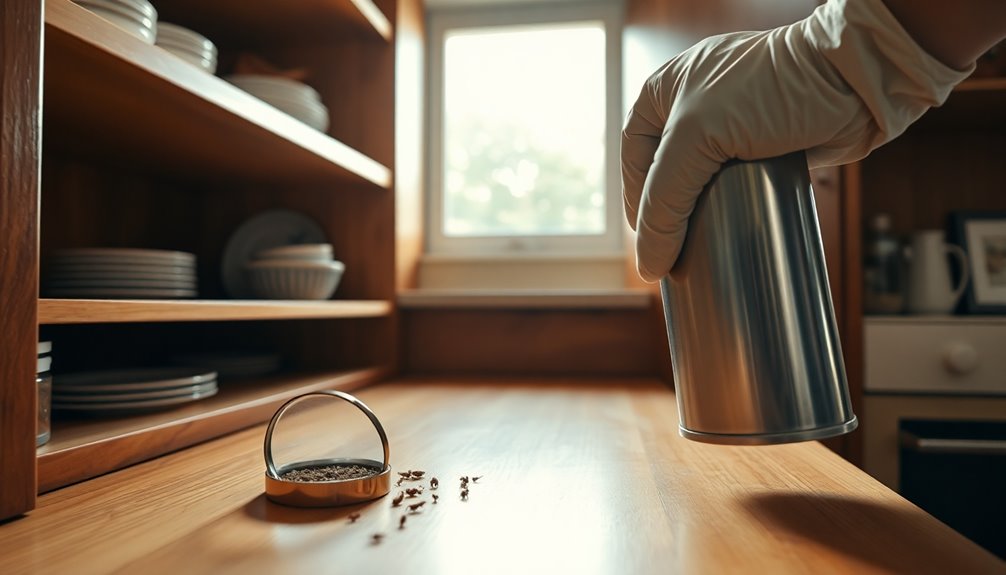
Regular inspections and maintenance are essential in safeguarding your kitchen cabinets from termite infestations, as they allow you to catch early signs of trouble before extensive damage occurs.
Aim to conduct regular inspections at least twice a year, focusing on areas with moisture exposure, since termites thrive in damp environments. A clean kitchen free of food debris and moisture can greatly reduce the likelihood of attracting termites, enhancing your inspections.
During routine checks, look for discarded wings, frass, or listen for hollow sounds when tapping your wood cabinets; these are clear indicators of termite activity.
Additionally, consistent maintenance like sealing cracks and ensuring proper ventilation creates a less hospitable environment for termites, complementing your inspection efforts effectively.
Frequently Asked Questions
Can You Get Rid of Termites Yourself?
Yes, you can get rid of termites yourself, but it mightn't be easy. Start by inspecting your home for signs like hollowed wood or frass.
You can try home remedies, such as vinegar or boric acid, but they often require consistent application. Setting up wet cardboard traps or using diatomaceous earth can help, too.
However, for severe infestations, it's wise to consult a professional for effective and thorough treatment.
What Are Termite Droppings in Kitchen Cabinets?
Have you ever noticed small wood-colored pellets near your kitchen cabinets? Those are termite droppings, or frass, indicating that termites are actively feeding nearby.
These droppings, typically measuring 1/32 to 1/8 inch, can create a fine powdery residue if disturbed. Finding frass in small piles suggests the insects may be nesting inside the wood.
Regularly inspecting for these signs is essential to catch termite infestations early and prevent significant damage.
Why Do I Have Termites in My Kitchen?
You might've termites in your kitchen because they're drawn to the wood materials present, like cabinets and flooring.
If your cabinets were made from untreated wood, they could've come infested.
Moist, dark areas in kitchens create a perfect environment for termites to thrive.
It's crucial to inspect your kitchen regularly, as these pests can cause significant damage before you even notice they're there.
Staying vigilant can help you catch infestations early.
Can I Spray Vinegar on Wood to Kill Termites?
Spraying vinegar on wood to kill termites is like using a squirt gun against a raging fire – it might help, but it won't solve the whole problem.
While vinegar can kill termites on contact due to its acidity, it won't penetrate deeply enough to reach all larvae.
You'll need to apply the mixture regularly for it to be effective, but for serious infestations, you should consider calling a professional for thorough treatment.
Conclusion
In the battle against termites, your kitchen cabinets can be the frontline. By recognizing the signs early and employing effective remedies, you can reclaim your space from these destructive invaders. Whether you choose DIY solutions or call in the pros, staying vigilant is key. Remember, a little prevention goes a long way—like a sturdy shield against future attacks. So, arm yourself with knowledge and keep your kitchen a fortress against those pesky pests!
